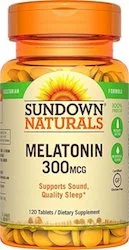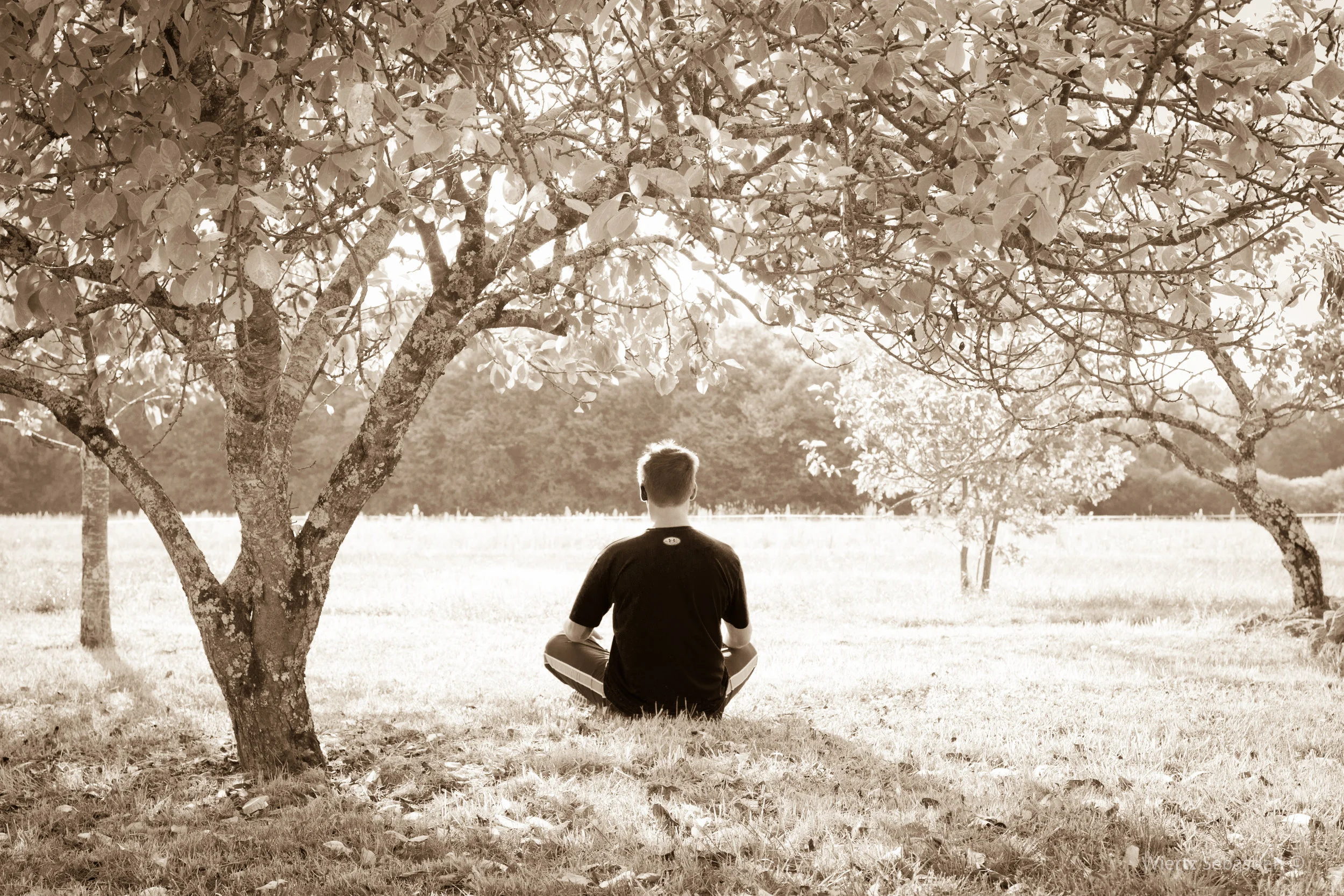How to Naturally Fall Asleep Faster Without Sleeping Pills
A few years ago I sustained a significant concussion while mountain biking, then just a week later had surgery for a pre-existing labral tear in my shoulder. A couple weeks later I was back in college, and felt just a bit different. I never had insomnia previously, but suddenly I found myself anxious and confused as I struggled to fall asleep each night. I would get in bed and keep checking the clock each hour as I tried to calm my mind, but before I knew it five hours would pass and I’d still be awake. Falling asleep was even harder then as I would start to fret about the next day. Thus began a vicious cycle, and I soon broke down and asked for a prescription of Ambien (zolpidem) sleeping pills.
In this case Ambien wasn’t a long-term solution, but I wanted assurance that I would fall asleep eventually at night. Prescription sleep aids such as Ambien aren’t without their risks though, and around 4% of U.S. adults over the age of 20 use them. For starters, mortality rates amongst patients prescribed hypnotics such as Ambien were 4.6 times higher than their matched control group within a 2.5 year period. Additionally, such drugs have a rare but serious side effect of causing activities such as eating and driving while sleeping. Once I began taking Ambien I started to look into sleep hygiene and various natural ways to fall asleep faster. Here are a few strategies I used which may help if you’re in a similar situation and trying to regain natural control of your sleep.
Start With Sleep Hygiene
During a bout of insomnia it’s often frustrating to be given tips on sleeping such as: no caffeine before bed, no naps during the day, the bedroom is for sleeping only, etc. These changes sometimes seem obvious or small, and we want quick solutions to help us sleep better. Sleep hygiene is important though. It’s all about building good habits, and these habits will supplement other techniques as well as build better coping mechanisms if sleep issues arise in the future.
Here are a few key elements of sleep hygiene I use:
- Try to establish a sleeping schedule. Go to bed at the same time each night, and the same goes for waking up on the morning. Your body will eventually get into the rhythm of falling asleep as the same time each night.
- Use the bedroom only for sleep. Don’t do work in your bed or watch TV.
- Avoid computers and all screens for at least an hour before bed. These devices emit light in the blue range, which affects melatonin production and subjective sleepiness.
- Avoid napping if you didn’t sleep well the night before. It’s hard to do, but taking a nap might decrease your sleep quality the next night.
There’s lots of information on the internet about sleep hygiene. Here are two resources worth looking into: the first is a detailed scientific review of sleep hygiene and its evolution, and the second is a simple list of recommendations by the American Sleep Association.
Melatonin
Melatonin is a hormone produced by the pineal gland that helps regulate the wake-sleep cycle. Levels of melatonin increase at night for sleep, and decrease in the morning. It’s also one of the few hormones that can be purchase over the counter, and research has shown it to be an effective tool in the treatment of insomnia, especially with populations over 55 years of age. I’ve used melatonin in conjunction with other relaxation strategies to help me sleep, but it should be known that melatonin isn’t intended as a long-term solution. After all, you are dealing with a naturally made hormone, and long-term supplementation can wreak havoc on your body. If you decide to try melatonin make sure to use a low dosage and use it as an occasional sleep aid.t
The optimal melatonin dosage is around .3 mg. Oftentimes melatonin pills are over 10 times this dosage, but more isn’t better. Search around for a low dosage. Sundown Naturals sells a .3 mg melatonin pill on Amazon.
Cold Showers
An interesting study came out a few years ago showing that cooling the brain allowed insomniacs to fall asleep more easily. Participants were outfitted with a cooling cap which was intended to induce cerebral hypothermia. The idea behind this was that insomnia is a form of hyperarousal, and gently cooling the brain, specifically the prefrontal cortex, would reduce brain activity. The researchers reported a 75 percent success rate, but little follow up research exists on this concept (aside from patents later filed for this device).
Based on this idea I began to experiment with cold showers before bed. I would go through my normal bedtime routine with some stretching and reading, and take a cold shower right before sleep. I shot for three to five minutes in the shower, and aimed to cool the whole body with a special focus on my forehead, which is where the prefrontal cortex is. I would often come out of the shower shivering, but it made it much easier to fall asleep.
I highly recommend trying this approach as I found it to be as effective if not more than medications. It can be hard to motivate to step into a cold shower though, so start with a warm shower and slowly decrease the temperature until it is as cold as possible. Keep the lights to a minimum to promote melatonin release before sleep.
Meditation
Meditation and mindfulness can be used for a variety of conditions including insomnia. Flickr Credit: Sebastien Wiertz
Techniques such as mindfulness meditation have been shown to be an effective tool in the treatment of insomnia. Positive results have been found with meditation as a stand-alone treatment as well as when paired with cognitive-behavior therapy. The idea behind this is that techniques such as mindfulness meditation allow an individual to approach the present moment with a sense of acceptance, which may prevent or decrease the hyperarousal that prevents sleep.
Diving into meditation may seem intimidating, but even a short two minute session is a good place to start. It’s important to approach meditation as a a personal, ongoing practice and start with achievable goals. A number of mediation and mindfulness resources exist online.
Here are a few resources I’d recommend looking into:
- Headspace is a free phone application (iPhone & Android) that slowly walks you through meditation from the beginning, and has more specific meditations for sleep and stress as you work through the program (later meditation modules are offered for a fee).
- UCLA's Mindful Awareness Research Center offers free audio of guided meditations.
- Fully Present is an excellent book on mindfulness in the modern age.
- Browse other meditation guide books to see if any appeal to you.
Bottom Line
Sleep issues range from occasional sleeplessness to debilitating insomnia. Prescription sleep aids may provide immediate relief, but they can have serious side effects and long-term use presents additional risks. I experienced chronic insomnia following a concussion and surgery, and struggled to control it. This led me to research natural ways to fall asleep, and techniques such as meditation and cold showers before bed became part of my long-term sleep regimen. Each individual has different needs, but these suggestions serve as a starting place to help you return to a normal sleep schedule and maintain it through the future.
Disclosure: Some of these links are affiliate links. That means if you click a link and end up making an order through any of these online retailers, this site receives a small commission. Thanks for your support - it wouldn't be possible without you!
Medical Disclaimer: I am not a doctor. Information from this website is opinion and should not be construed as medical advice. For specific questions on health please consult a medical professional.
Questions or Comments?
Did I miss something? Have a comment or something to add? Post below!
Like this post? Sign up below for an email newsletter from the site. No spam, I promise!









Studying for Step 1 is often a source of anxiety for medical students since it's seen as such a monumental task and high stakes exam. The purpose of this article is to distill some of my experience with the hope that it can help others be less stressed & better prepared for this exam in the future.